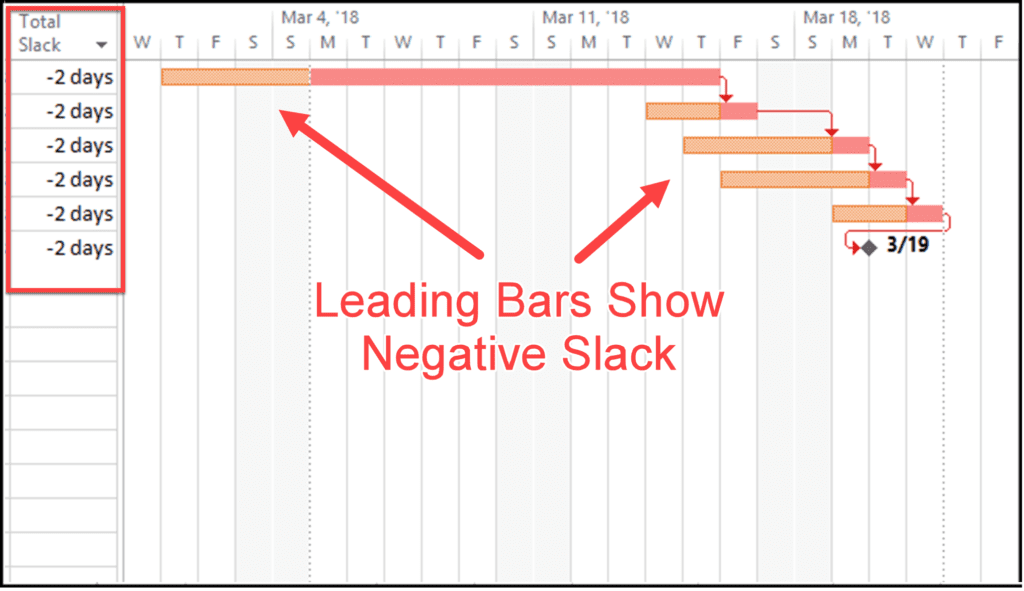
they have the value Yes in the Critical column) have a total slack of 0 days. To insert the Critical column, select Insert Column option under Format menu and insert it in front of the Total Slack Notice that tasks that are critical (i.e. In this way, you will see the correlation between tasks that are critical and the amount of total slack.
#TOTAL SLACK AND FREE SLACK FREE#
See the Free Slack and Total Slack Notice that we have only positive values for the total slack.Go to Project menu – Table and choose Schedule.
#TOTAL SLACK AND FREE SLACK HOW TO#
Step by step on how to see Total Slack, Free Slack, Start Slack and Finish Slack for tasks: To make sure your project finishes on time, try optimizing tasks that have slack and are not on the critical path. You can also use the Total Slack field to determine how to recover a schedule that's slipping. This can be useful if a resource needs more time on a task, or if you want to assign a resource to another task. Use the Total Slack field to determine whether the task has any time available for a delay. If a critical task is delayed, the project finish date is also delayed.

In Project Plan 365, critical tasks are defined to have a total slack of 0 days (or less), whilst non-critical tasks are defined to be any task that has a total slack greater than 0 days or is complete. If total slack is a negative number, it indicates the amount of time that must be saved so that the project finish date is not delayed. A positive slack indicates the amount of time that the task can be delayed without delaying the project finish date. Total slack is the amount of time a task can be delayed before the project finish date is delayed. If you know where slack exists in your schedule, you can move tasks when certain phases of the schedule have no slack and other phases have too much. The amount of slack in your schedule indicates how long tasks can be delayed before other tasks or the project finish date are affected. The critical path method calculates the early dates (Early Start and Early Finish), late dates (Late Start and Late Finish) and total slack. This technique is used to help project managers to determine the shortest possible project duration and the level of flexibility that exists in the project. The Critical Path methodology identifies the paths of tasks most likely to impact the project completion date. Total slack: The total slack of an activity is the time this activity can be delayed without impact on the finish date of the project. Free slack: The free slack of an activity is the time this activity can be delayed without impact on the following activity. It’s automatically calculated into your project when you schedule tasks, and you can use it as buffer time if needed when your schedule is at risk of being delayed. That should take care of the issue.Slack, also called float, is the amount of time a task can slip before it bumps into another task. In addition, I’ve also seen many smaller task chains showing as critical simply because the task chain is missing a first task in chain predecessor and/or last task in chain successor.Ĭreate a view to include any tasks with null predecessor and/or successor values and add the missing dependency to all identified tasks until all tasks (except first and last) have both. I’ve seen projects with many dozens of unlinked tasks showing as critical.

It may not really be critical path in terms of how you or I would assess it, but simply based project’s binary logic (<1 = critical_) it shows flagged as critical. If a task has no predecessor/successor tasks, project can’t assess the delay impact and therefore can’t determine a slack value. Slack is the amount of time a task can be delayed without impacting the project end date. In order for Project to determine which tasks are on the critical path, all tasks need to have predecessor and successor tasks.


Enterprise Project Management (EPM) Training.Project Management Certification Training.


 0 kommentar(er)
0 kommentar(er)
